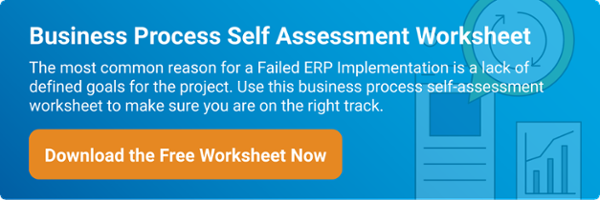
Successfully bringing your product or service to market requires a lock-tight strategy—a sleek website that converts prospects to customers, a smooth sales process, and top-notch customer service. But customer experience shouldn’t stop once the sale is made. One often-overlooked opportunity also happens to be one of the most important: the invoice.
For subscription businesses, in particular, invoices provide a direct, regular touchpoint opportunity with customers so why not optimize them to their full potential? Here are 4 tips to make your subscription invoices surpass expectations.
Tip 1: Native integration with your system of record
When considering the workload associated with recurring invoice generation, it’s imperative to have a billing platform that not only connects with but fully integrates into your primary business management system. While there is no shortage of automated billing platforms out there, not all of them have native integrations with your ERP and/or CRM. The benefits of this are two-fold, extending to customers as well as internal processes.
The seamless integration of recurring CRM- and/or ERP-based transactions with the billing engine allows payments to be applied and recorded to the customer’s record immediately. This helps to eliminate the risk of manual data transcription errors.
The ability to process subscription and non-subscription items on the same transactions is also another important benefit for customers. This capability reduces confusion and creates efficiencies for internal accounts payable departments. (And when you’re favored by AP, you automatically get a leg up against less-efficient vendors.)
While not customer-facing, it’s important to remember that having a unified core framework connects transactions, subscriptions, and projects directly to the billing engine. This allows the seamless flow of real-time data to your financials and ensures compliance with revenue recognition standards.
Tip 2: Include relevant subscription details and other key data
One way to ensure on-time payment is to make very clear to your customer what is being billed. This means including a detailed, itemized list with familiar terms or verbiage. While product codes or internal lingo might make sense to you, it may only create confusion on the other end. Furthermore, your invoice should be able to include customer-specific codes or lingo that they may be expecting or needing in order to better understand the charges. E.g. – Customer Site, Asset, or Device IDs relating to the subscription charges.
Terms + Contacts
Explicitly state the billing period date(s), the due date, and the issue date. Provide clear documentation of terms, penalties, and any desired disclaimers. It’s also prudent to include direct contact information on the invoice in case of customer questions.
W9 Information
One practice we’ve implemented here at 360 Cloud Solutions is including a link to our current W-9 right on the invoice. This makes it easy for clients to have easy access to that information when needed.
Site, Device, Assets
For smart device companies, this could mean including the serialized device ID, site name, or asset ID/name along with a related subscription charge. This provides the highest level of clarity to customers and will help to reduce inquiries and payment delays.
Tip 3: Upsell opportunities
An emerging best practice is to use invoices for more than just simple accounting and presentation of charges for payment. You can use them to promote other products or services to be cross-sold or added to your customer’s existing contract.
i.e. – You already have Subscription X, but did you know that X provides even more value when paired with Subscriptions Y and Z?
When generating web-based, PDF invoices, be sure to include links to more information, the product page, or contact information for your sales team. As a reminder, recurring invoices are likely the most frequent touchpoint with your customers—make them count!
Tip 4: Cohesive branding
While it might sound obvious, making sure your invoice properly reflects your corporate branding is critical and ties everything together. At a glance, your customers should be able to identify who issued the invoice. This means using a clear, crisp logo and making sure that the appropriate graphics and information are used for any subsidiaries you may have. Further, using an easy-to-read font reinforces the professionalism of your company.
NetSuite, for example, provides a powerful Advanced PDF/HTML Templates tool that allows you to custom-tailor the content, look, feel, links, and more for your subscription invoices. When combined with automation and relevant subscription details such as billing period dates, descriptions, and discounts, you can be sure you’re providing a clean, clear, and accurate invoice with minimal effort.
Don’t overlook the importance of invoices for your subscription program. An invoice is more than a request for payment—it’s an extension of your brand and a recurring reminder of their experience with you. With some of your customers, the ties between Accounts Payable and decision-makers or influencers may be closer than you think!
360 Subscription Billing makes managing subscriptions easier than ever and supports many recurring contract scenarios, allowing you to serve your customers without the limits of other solutions. By leveraging the powerful NetSuite platform with 360SB, you can turn your Invoices into experiences as outlined above.
Contact 360 Cloud Solutions to see how you can elevate your subscription billing invoices today.




